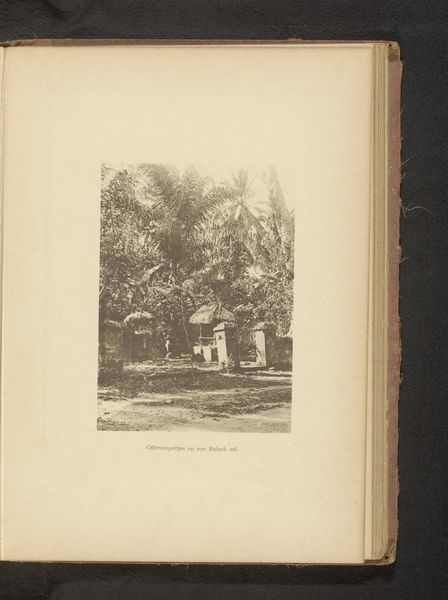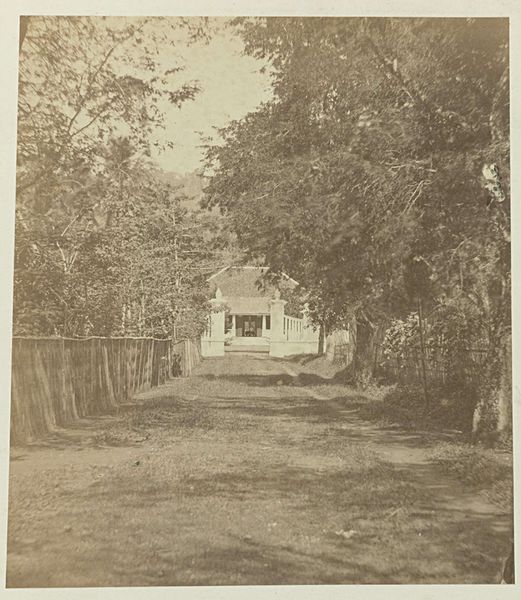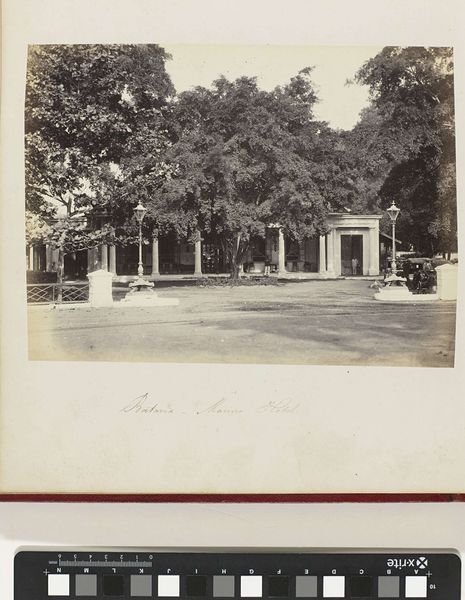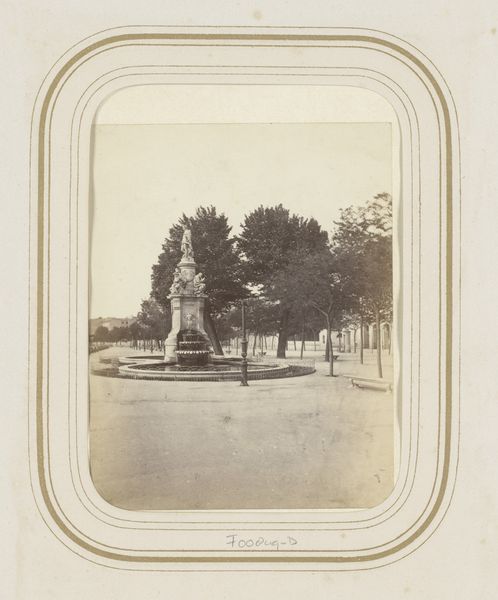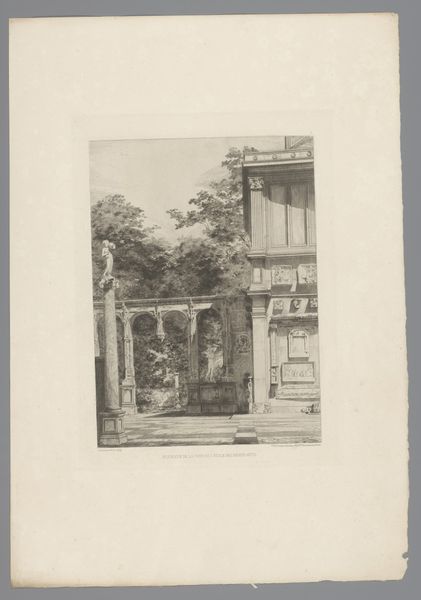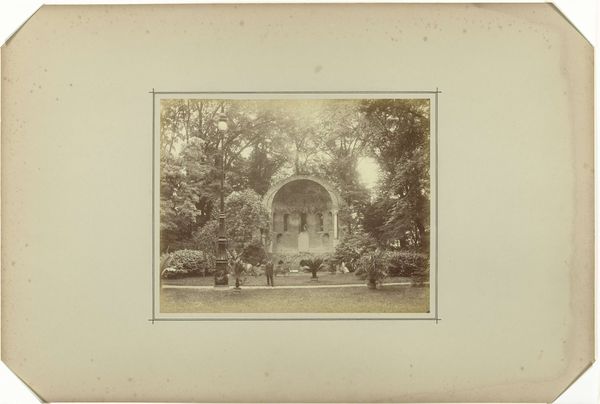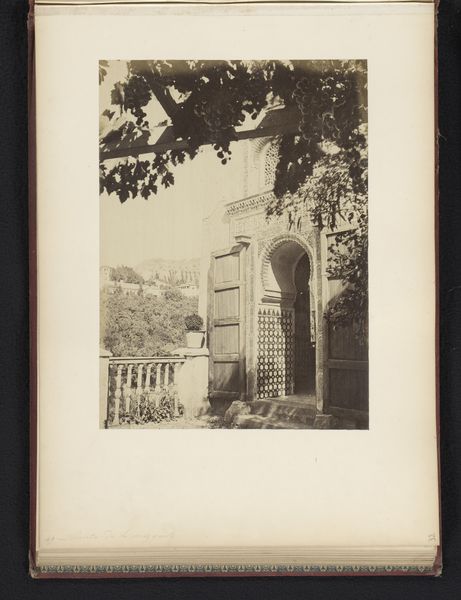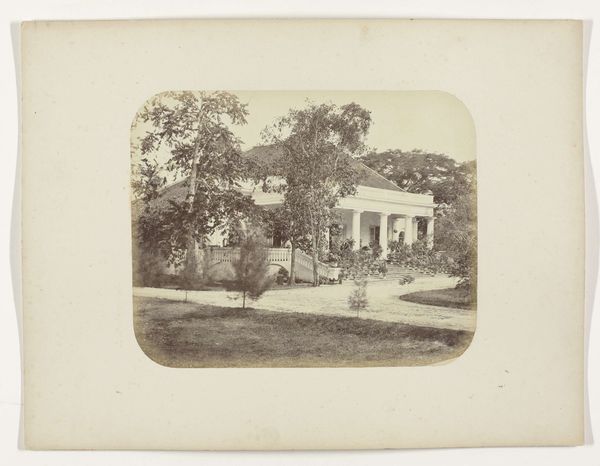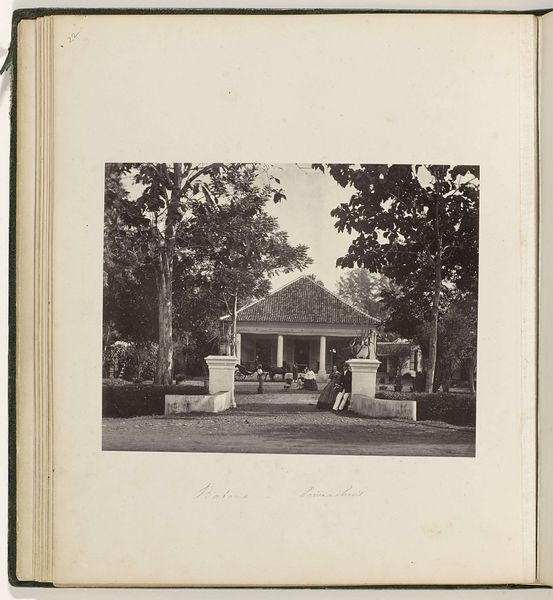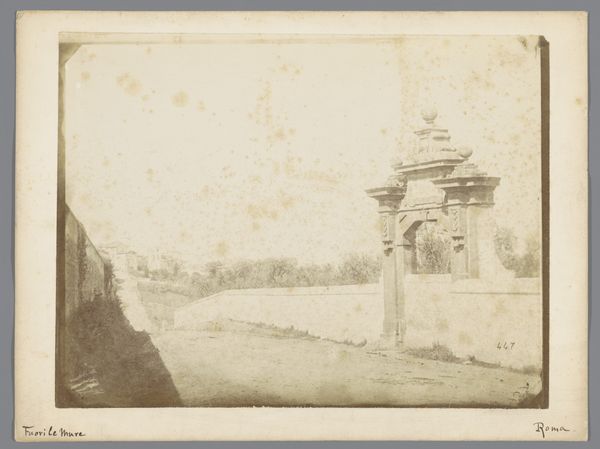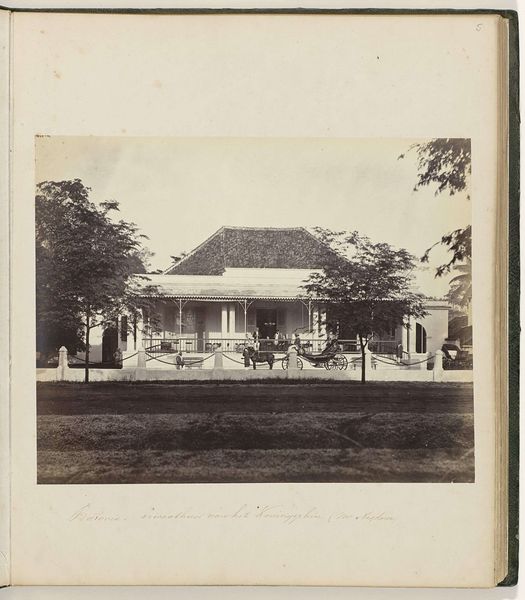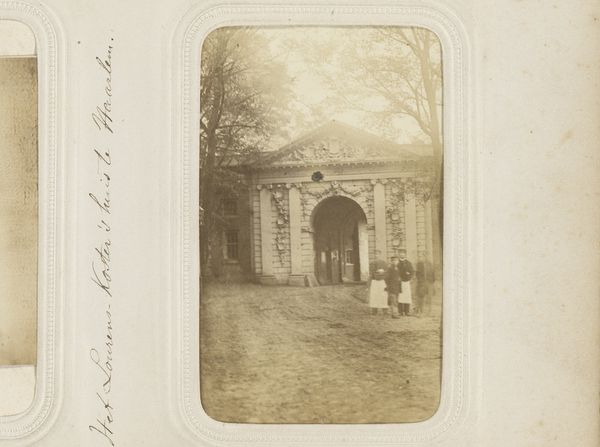
photography
#
still-life-photography
#
landscape
#
photography
#
orientalism
Dimensions: height 169 mm, width 123 mm
Copyright: Rijks Museum: Open Domain
Curator: Let’s look at Christiaan Johan Neeb’s photograph, “Poort in een muur” from 1894. Editor: Right, "Doorway in a Wall," made using photography. It feels almost like a stage set, a flat facade with something overgrown lurking behind it. What do you see in this piece? Curator: I’m struck by the tension between what the image presents and what it conceals about production. On the surface, it's a rather straightforward depiction. However, let’s think about the physical creation of this photograph. Consider the materials required - the glass plate, the chemicals, and the paper. And then consider how the environment of the location in Indonesia where this image was taken, affected both the production of it and how it became viewed by the West through the lens of Orientalism. The manual labor involved in processing and printing this image connects it to a much wider social and economic context. Editor: That's interesting. I was really just seeing the composition, the wall bisecting the image with nature encroaching from behind. Curator: Indeed. But the photographic process itself transforms labor and time into a commodity. What appear to be straightforward documentations of landscapes in far away lands actually conceal a very involved material network of capital, labour, and the photographer’s intentional manipulations. What we see depicted as natural or commonplace isn't quite so. It becomes both an act of record, and an extension of Western culture using photographic technologies as they extract meaning from materials or their subjects. Editor: So, you're saying even something that seems like a simple landscape reveals a complex network of production? Curator: Precisely. Photography became an apparatus for cultural narratives with complicated histories embedded within each print. Editor: I never thought about the materiality of photographs this way before. It makes me see the image – and photography itself – as a constructed object. Curator: And seeing photography through such a framework pushes against established narratives. It's always been considered in terms of aesthetic value, but it also represents labor value. Editor: Right, that’s a perspective that completely changed my perception of the artwork. Thanks for sharing that.
Comments
No comments
Be the first to comment and join the conversation on the ultimate creative platform.
